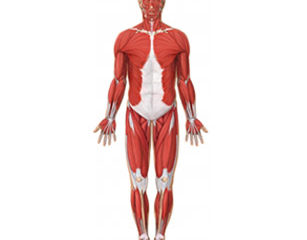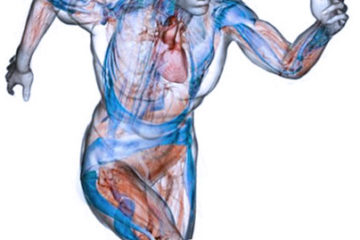For millions of Americans, the workday is defined by hours spent sitting in front of a computer monitor. Computer use has become an integral part of our modern daily life. For these typical members of the modern workforce, a workday includes 8 to 12 hours daily spent seated at a desk. Naturally, the human body is not designed for such extended periods of sitting.


Biomechanically, sitting places the body in an inferior position. Prolonged sitting can impact the muscular system in a negative way, causing the muscles of the back and neck to spasm. In this common scenario, muscle spasm occurs because the muscle is forced to remain in contraction while the person sits for a prolonged period of time. The muscle becomes shortened and is unable to relax, resulting in spasm and muscle pain.
Common resultant pain symptoms include pain of the low-, mid- or upper back, neck pain, shoulder pain, “tennis elbow” and carpal tunnel syndrome. Workers suffering from back pain and other pain problems caused by poor biomechanics miss many workdays each year, resulting in diminished productivity and significant economic losses for their companies and for the economy as a whole.
“The optimal (that is, the most efficient) way for the musculoskeletal system to support the body is when all the joints are stacked vertically one upon another.”
Let us look more closely at the sitting position from the perspective of biomechanics.
Biomechanics may be defined as the workings of the musculoskeletal system, which allow one to position and move the body voluntarily. From this perspective, we will be able to understand how prolonged sitting may result in painful spasms of the muscles of the back, neck and shoulders, as well as how these problems may be prevented and alleviated. There are three factors, which will determine body position and movement in space, in any given moment.
- The gravity center, which controls the balance center of the body, is located in the center of the pelvis, between the hips.
- The righting reflex is responsible for keeping the eyes horizontally level. If the eyes are not level we become dizzy and are unable to function normally.
- An innate mechanism in the body, which we may call the “Law of Reaction” determines that for every action there is an equal and opposite reaction. This simply means that every time the knees are lifted in flexion, the upper back and shoulders tend to slouch forward, and when the knees are lowered, the spine will straighten.

Together, these three physical facts determine our sitting standing or walking postures. The optimal (that is, the most efficient) way for the musculoskeletal system to support the body is when all the joints are stacked vertically one upon another.
This means that while seated, the head, shoulders, hips and at least one knee should be, as nearly as possible, in a vertical alignment. Most people, when seated, tend to maintain the knees at the same level as the hips. In so doing, the spinal muscles fatigue and, sooner or later, the posture will deteriorate into a slouch, bringing the shoulders and the head into a forward malposition. In the moment the head is dropped forward and down, the righting reflex is activated, triggering the nervous system to send the message to the neck muscles to contract, pulling the head back in order to level the eyes. The neck muscles are forced to work excessively in response to a change in the gravity center; all subsequent muscular activity between the head and the hips occurs as a result of the nervous system’s continual effort to maintain the eyes on a level plane. Eventually the muscles fatigue, become spastic and the pain may be felt in the neck, shoulders, down the arms and in the form of muscle tension headaches. In addition, the position of the lower back will tend to strain the muscles of the low back and the hip flexors, resulting in pain in the low back and hips, with radiation down the legs.
To counter the effects of the inferior sitting position on the muscular system, one should lower the knees (or at least one knee) to a position of about 30 to 45 degrees below the level of the hips. The lower the knees (that is, the nearest to a vertical alignment is achieved) the better. The moment the knees are lowered, the back shifts downward and straightens, pulling the shoulders backward (that is, correcting the slouch) and lengthening the muscles of the neck. This positions the head correctly atop the shoulders, eliminating strain on the neck muscles and automatically leveling the eyes.
In working with a neuromuscular therapist to reverse the detrimental effects of excessive sitting, specific muscles or muscle groups may be found to require strengthening while opposing muscle groups require lengthening via regularly performed stretching exercises. The skilled neuromuscular therapist can rapidly assess asymmetries in the musculoskeletal system that have arisen from the individual body’s attempts to satisfy the principles of biomechanics, in performing one’s daily functions.
A simple program of corrective exercises may be recommended that is tailored to the individual’s needs and postural habits.
In understanding the root causes of the disturbance and making the necessarily postural changes, not only is the pain alleviated, but also the person learns preventive measures that will prevent future episodes. The correct sitting position and therapeutic muscular support (that is to say, the precise correction of the imbalance in the involved muscle groups) will enable the person to work at a computer, remaining seated for extended periods of time, without becoming debilitated.


